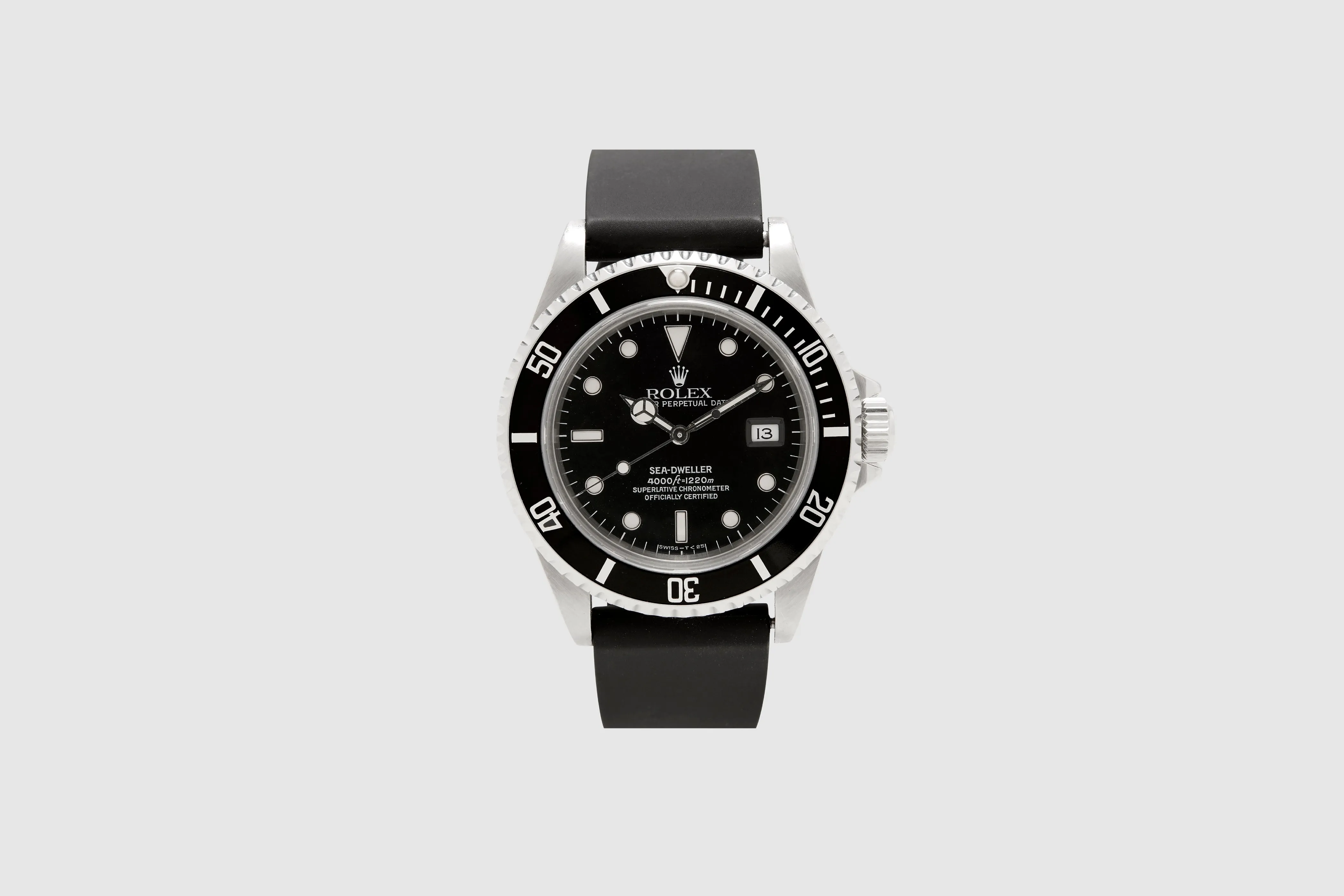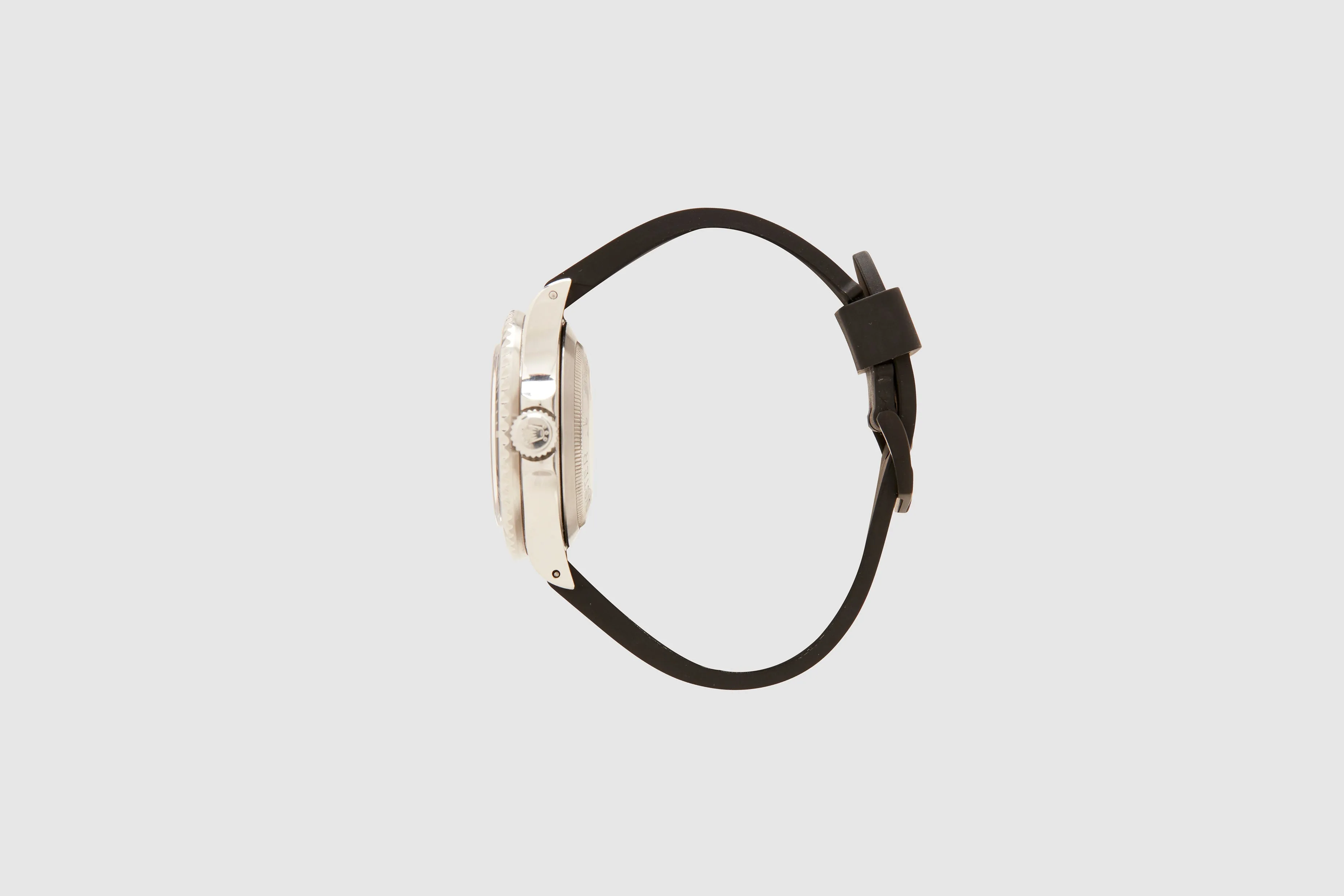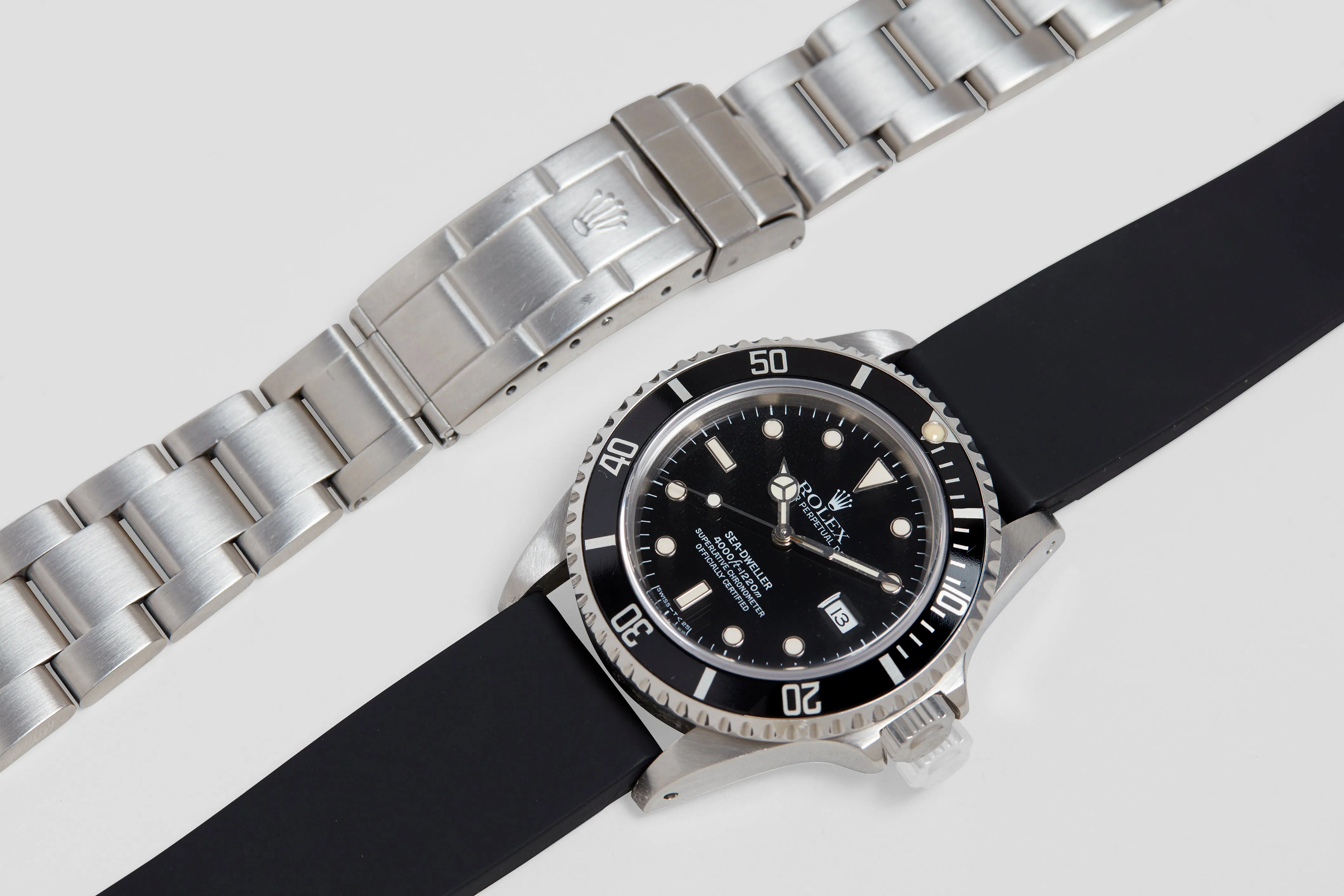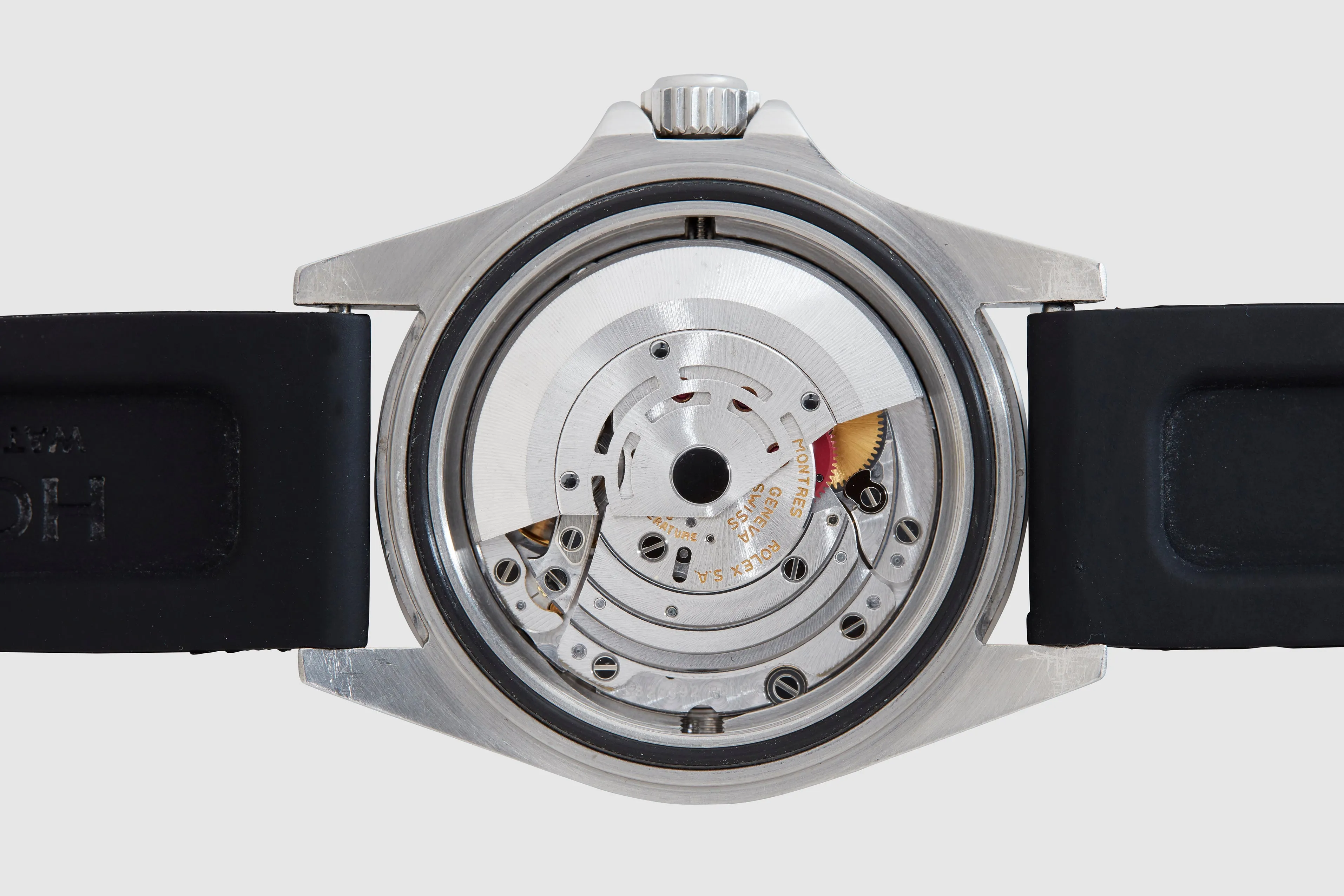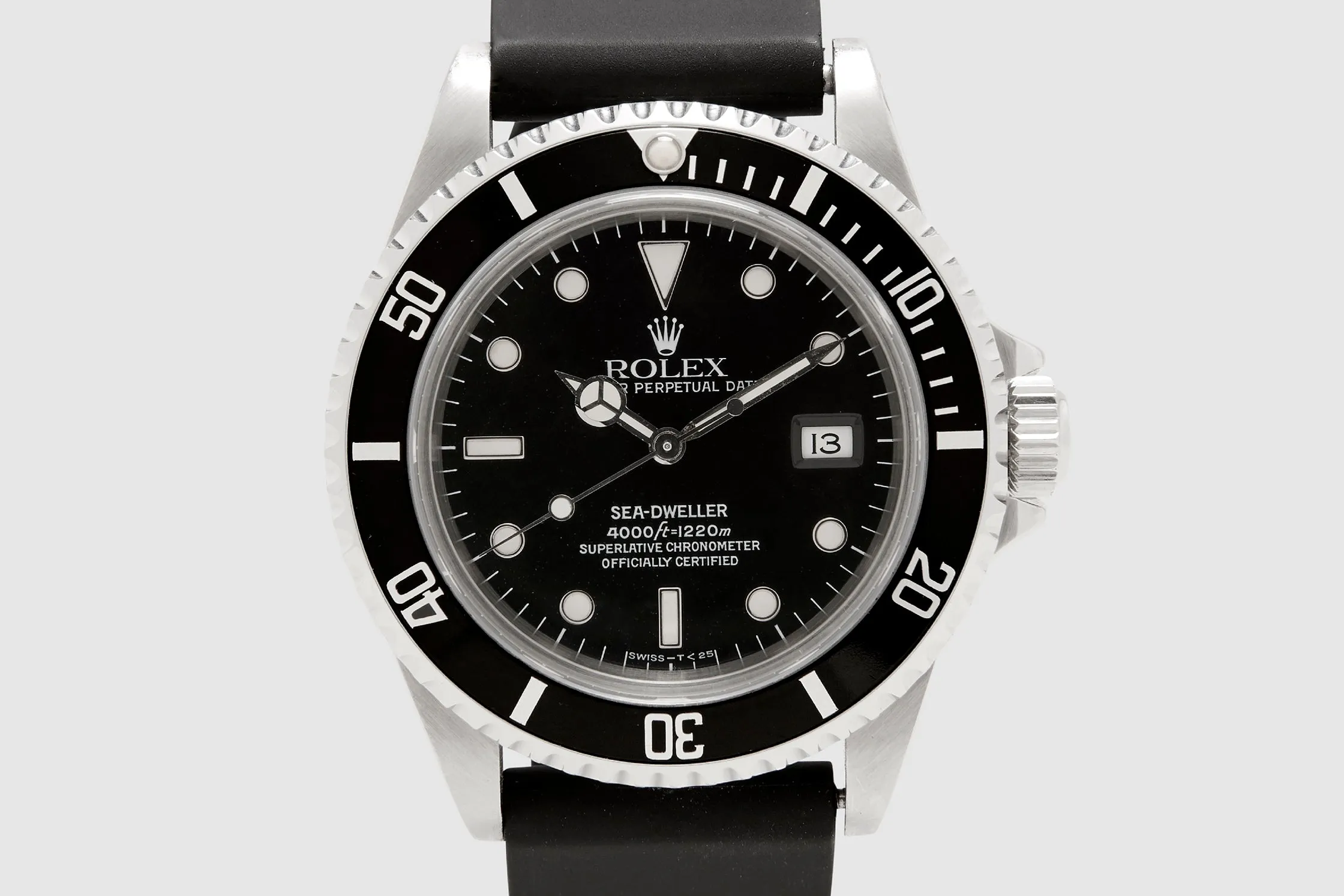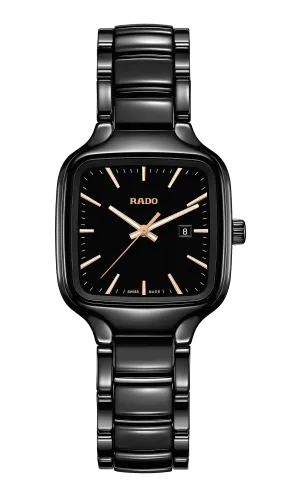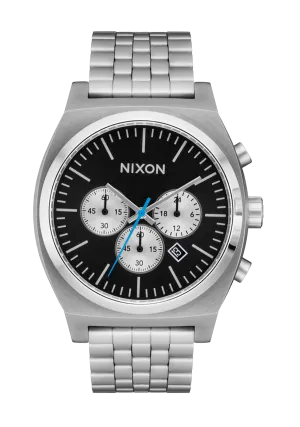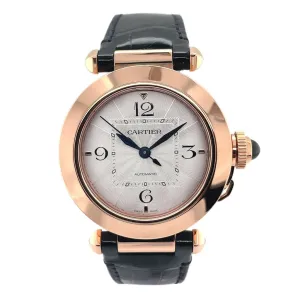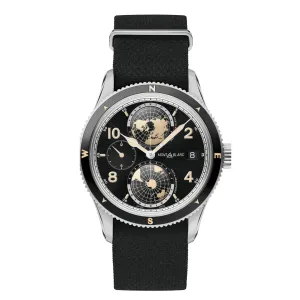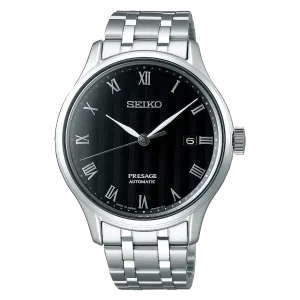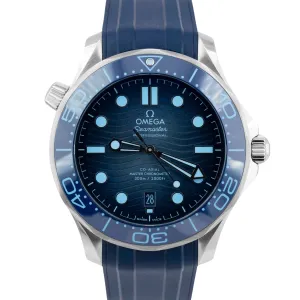An automatic, stainless steel, Rolex Sea-Dweller with date.This watch could be considered an evolution of the most iconic, and certainly the most recognizable watch in the Rolex stable. Since its inception into the Rolex line up in 1953 the Rolex Submariner watch has been worn and loved by divers, members of the military, movie stars and today's watch collectors. This upgraded version of the Submariner marked an improvement of its dive capabilities.
The Sea-Dweller was introduced in the late 1960s. At the time, the Submariner could already reach an impressive depth of 200 meters/660 feet so it is fair to say that it was a very competent tool for the majority of the world’s deep sea divers. The Sea-Dweller was not correcting flaws found on the Submariner but rather extending its underwater performance. As diving went from being a fun recreational sport for daring individuals in the 1950's, into the 1960's it became the new mountain climbing for adventurers, scientists and members of the military. Many divers in the rigorous and exceptionally dangerous explorative ‘SeaLab’ expeditions experienced that the crystal would often pop out of their Submariner watches while sitting in the decompression chamber after a dive.
The whole scientific purpose of SeaLab was to study the effects of staying underwater for extended periods of time (the former Astronaut Scott Carpenter achieved 30 consecutive days in 1965). This could only be achieved through saturation diving, and this is where the Rolex Submariner met a serious challenge, and needed improvement.
Saturation diving requires the use of helium in the breathing gas mixture, and helium particles would accumulate within the case of a diving watch during prolonged exposure. During decompression, the pressure inside the watch would have to be let out through the weakest point of the watch, brutally expelling the plexiglass as that helium gas forced its way out. Many prototype watches were made to try to solve this, and they were often nicknamed "Sea-Dweller" watches, given the multi-day stays under water. In the end, a rather simple and efficient mechanism was developed in the form of a helium escape valve on the side of the case, Swiss patent CH492246. By letting the helium particles escape through a controlled mechanism, the exploding plexi issue was solved. And so began the lineage of the Sea-Dweller, back in 1967.
Now, 55 years later, there have been more innovations, more extreme depth ratings, and even a few special editions worth nothing. From the first reference; the 1665 ‘Double Red’ all the way through to the James Cameron Deep Sea. The model remains in the Rolex stable today under the reference 126600, and has a single printed red Sea-Dweller name in honour of its original test watches.
This reference, the 16600, launched in the late 1980s, is virtually identical to the late “Triple Six,” maintaining its sapphire crystal and its 1,220 meter water resistance. Over its remarkably long production period, the luminous material evolved from tritium to Luminova, and then to SuperLuminova. You can easily tell which is which by looking at the bottom of the dial – T Swiss T<25 indicates Tritium, Swiss indicates Luminova, and Swiss Made indicates SuperLuminova.
The reference 16600 also utilizes the caliber 3135, a slightly improved version of the caliber 3035. It has a longer power reserve and a full-fledged balance bridge, instead of the balance cock. The reference 16600 was discontinued after 20 years in Rolex catalogs, making it the longest lasting Sea-Dweller reference.
This dial is marked "Swiss T>25", meaning that this dial has applied Tritium luminous material. The colour of which has already started to turn a beautiful warm caffe latté colour. It is really not easy to tell this from the images. But, in person the colour of the lume plots are gorgeous, and will only get better with age. This material replaced the highly dangerous, and radioactive Radium in 1963. Just like radium, tritium was also radioactive; however, it came with a much lower level of radiation and a much shorter half-life. While tritium was exponentially safer than radium, it only had a half-life of twelve years. This meant that after just a few decades, only a tiny fraction of the initial luminescence would remain. Additionally, as tritium ages, the color changes, which creates often beautiful, and highly sought after patinas on the luminous markers on these older Rolex watches. Tritium was far from perfect, which led Rolex to search for a better alternative.
The answer came during the 1990’s, from a Japanese company called Nemoto and Co., which specialized in producing luminous paint. Their new compound, called Luminova, was photoluminescent rather than radioactive, making it entirely harmless. Additionally, it was not prone to fading or discoloration like its predecessor, tritium. Luminova was far superior to tritium, and by 1998, Rolex began using it on their watches. These are now rare and collectible, as the production run was around two years, and are marked simply "Swiss". By 2000, Rolex had switched to Super Luminova, a slightly improved version of Luminova that was sold through a different supplier. These dials were marked "Swiss Made", like this one presented here. Being that this watch was made in 2000, it is one of the first batch of the Super Luminova dials. In 2008, Rolex announced a switch from Super Luminova to its own proprietary compound, Chromalight.
The case is, as you would expect to find with a tool watch now coming up for almost thirty five years old, has some slight scratches and signs of wear. It has, however, never been polished. This is almost unheard of with watches from this period, making this a very rare example indeed. The bezel insert is correct and original to the watch. The pip set in the arrow at the sixty minute mark has already turned a light coffee colour, and looks great sitting atop the watch. The bracelet is also all original, tight and excellent shape throughout complete with the diver extension.Marked 93160 with fixed endlinks. A bonus feature to these bracelets is the addition of the date code. In this case it is stamped 'P'; L for 1991. This also coincides with the case serial number of the watch which starts with E646,XXX for having been made in 1990, and is nearer to the end of this particular year's serial range.
As can be seen in the photographs, the watch also comes with this rubber band from American company; Horus Watch Straps. This makes the watch wear a little easier as it is a thicker case than the classic Submariner, and is a great option to mix the look of the watch up.
Overall, this is a spectacular watch, and as far as more contemporary Neo-Vintage sport watch models go, soon to be a future classic, and is increasingly desirable. It is hard to find a better example.

